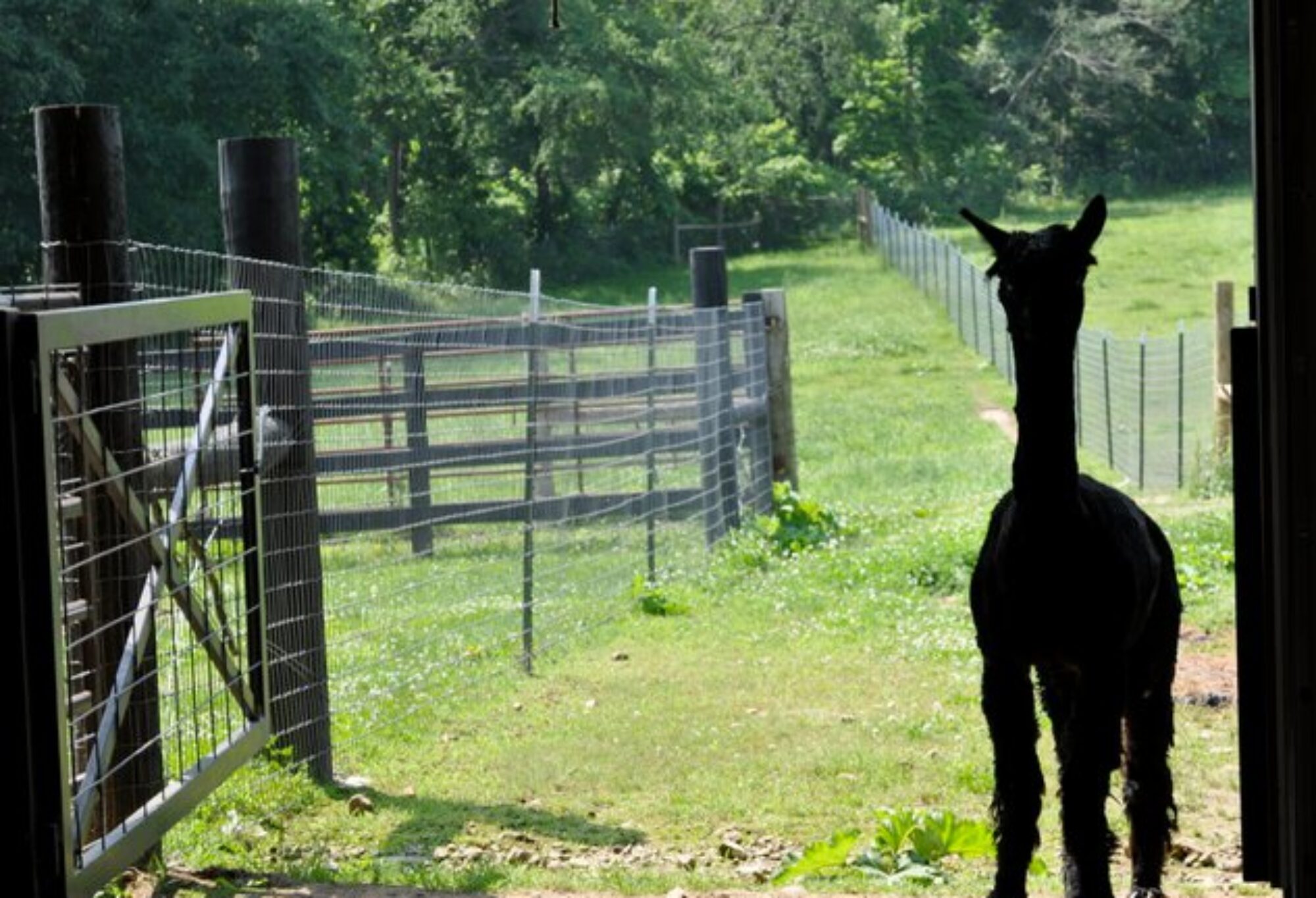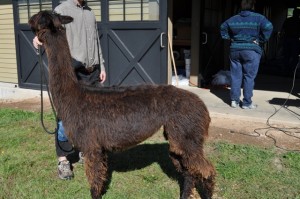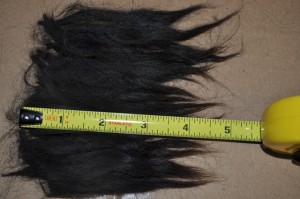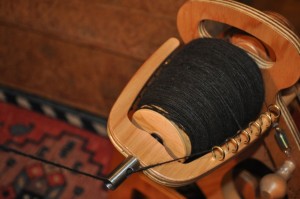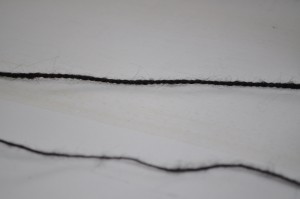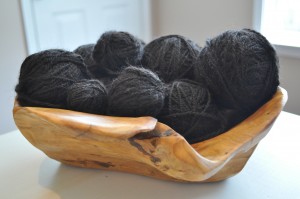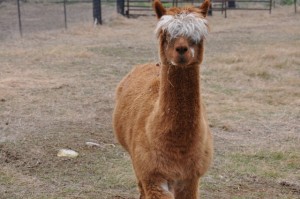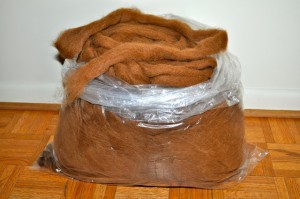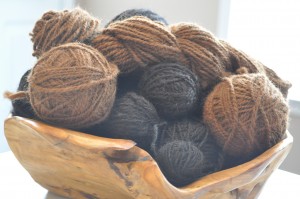Meet Lapasea, the first alpaca we ever bought. We traveled to Utah to get her, and she has staked her claim as the alpha female on our farm. Interestingly, she spits at all the other girls to keep them in line; however, she is a sweetheart to people. We shear all the alpacas in April, and in her photo above, she has been cleaned to remove dirt and debris from her fleece. She’s ready to go into the barn to be shorn. You can see the luster of her fleece in the sunshine – luster is a very important quality in Suri fleece!
This is Lapasea’s blanket fleece. You can see the independent locks that curl around themselves. This is an example of really nice fleece, and her color is true black with brown tips.
This is what the fleece looks like when you separate it to examine the lock structure and the staple length. All important facts to know if you are considering spinning the fleece into yarn.
My alpacas provide me with lots of fleece each year, and I really wanted to learn how to spin. I was very lucky to discover that my neighbor at Millennial Way Farm is completing a two-year program to become a master spinner, and she was open to teaching me to spin.
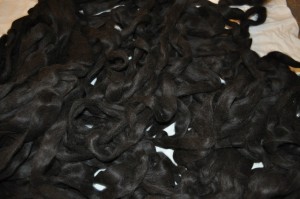
There are a couple of ways to prepare your fleece for easy spinning. One way is to hand-card it, but my teacher suggested I send it to a fiber mill and have it turned into roving. Roving is a when the fleece is run through a special type of machine that combs the fibers, removes any remaining debris and rolls it into a long continuous rope of fleece with a bit of a twist put into it to hold it together. The above picture is the roving produced from Lapasea’s entire blanket plus neck fiber. It’s easy to see the pile of roving that will be turned into yarn!
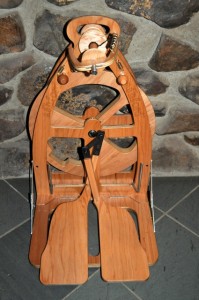
This is my wonderful Ashford ‘Joy’ double treadle spinning wheel. I chose it because it can be folded up, placed in its carrying case and taken along when I travel.
After a couple of spinning lessons, I was able to fill my first bobbin! I was very excited. The next lesson was how to produce a double-ply yarn.
See the difference between the single and the double-ply?
The finished product!!!! Lapasea’s fleece has now become balls of double-ply yarn.
Then I got to thinking……….. Although most of my alpacas are of the Suri variety with long silky fleece, I do have a few Huacaya alpacas. Their fleece is crimpy and puffy, more like wool. I wonder how their fleece will compare to the Suri fleece when I spin it? Since Morgan was my first Huacaya, I decided I should start with his fleece.
So I had his fleece processed into roving. I found that because of the crimp in the Huacaya lock structure, it was easier to pull and fluff it as I fed it into the spinning wheel. It produced a yarn with a softer feel where the Suri yarn had a slicker silkier feel. Both will make beautiful products. Many people use Suri for lacy shawls and Huacaya for things like socks and sweaters.
Here is an example of some of Morgan’s yarn added to the bowl of Lapasea’s yarn. Note that I finally got a Niddy Noddy that allowed me to make some of Morgan’s yarn into a skein (the long twisted piece on top) instead of balls of yarn.
Next I plan to learn how to blend different kinds of fleece together prior to spinning. I’ll let you know how that turns out!
